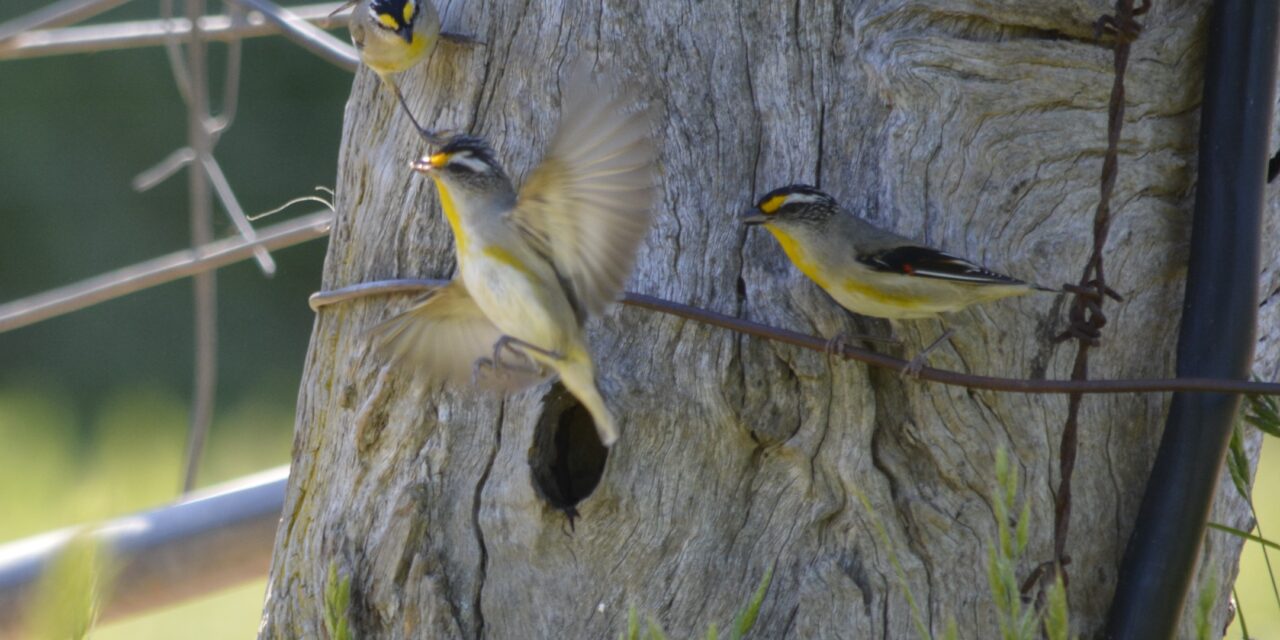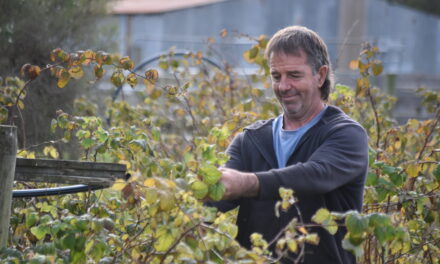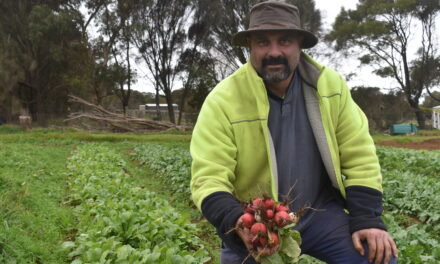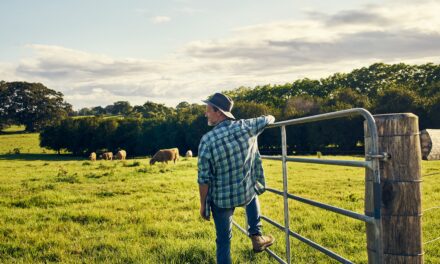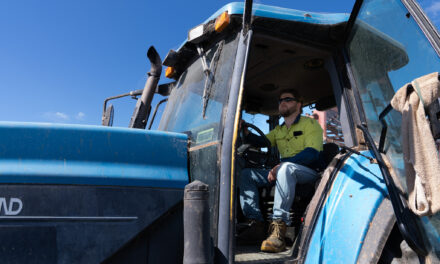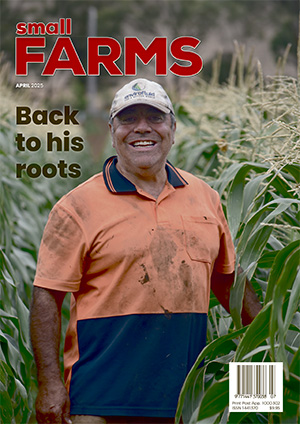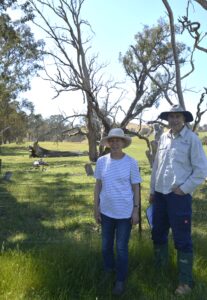
Judy Marshman and Chris Cobern stand before two paddock trees which have died from excessive ‘camping’ underneath by livestock. Mrs Marshman said the fallen tree at left was damaged by a small tornado.
Biodiversity on farms is certainly not old school in livestock production, but its adoption has the dual function of conserving endemic wildlife and stock animal welfare. ANDY WILSON has the story.
The link between biodiversity and productivity that would interest farmers is thankfully more than tangible when explained by Landcare coordinators who know their rufous songlark from their pardalote and also understand the importance of paddock trees for cattle and sheep.
Judi Marshman and Chris Cobern, from Upper Goulburn Landcare Network in north-eastern Victoria, gave Small Farms a tour of Landcare’s projects to conserve large paddock trees on a property at Limestone, near Yea.
“If you watch the landscape over time, you see that the large old trees that farmers rely on for their cattle and sheep to camp underneath for shade, they are starting to die,” Chris said.
Adding to the damage is the compacting of soil beneath the trees which crushes nutrient-absorbing roots that grow closer to the soil surface.
The dilemma facing farmers is the need for stock animals to be able to access shade close enough but not too close that they ‘love the trees to death’.
The science behind paddock tree preservation needs to find that sweet spot of placing the fence at the right distance to be effective but also provide sufficient shade.
Ideally, fences need to be placed under a tree’s drip zone which usually matches the shadow outline at the zenith of any given summer day.
“Landowners can design fences their own way so that the stock can still access their own shade,” Chris said.
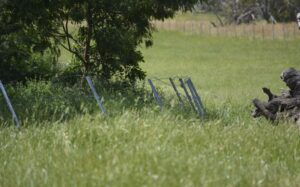
One design for paddock tree fencing is with inward leaning posts which prevent cattle from grazing on vegetation.
Judi said the impact of fencing out cattle was almost immediate.
“Once you start fencing off large trees, you get seedlings coming up underneath whereas usually the cattle will eat the seedlings,” she said.
“The idea is to get the vegetation regrowing and that brings the biodiversity back.”
Landcare also plants understorey species.
“So they go in as well, and then the whole thing regenerates.
“If you build the right biodiversity surrounding the tree, then you’ve got more likelihood of saving the tree.
“The idea is to join the plantations up as wildlife corridors as well.
“There is more to livestock production than simply leaving the odd tree in a paddock for cattle and sheep to seek shade under.”
One of many problems facing gum trees is the damage done by lerps, and my hosts interrupt their explanation of that damage by identifying birds that call out at random around us.
Lerps are ‘psyllid’ insects which form galls and leaf pimples on both native and fruit trees.
“We have a real problem with lerps,” Judi said.
“They produce a sugary coating around them when they feed, which is sucked from the tree’s sugars, weakening them.”
“If you have understorey, then the birds come into it and they eat the lerps,” Chris said.
“Some birds, like the noisy miner, just eat the sugary coating and leave the grub to continue sucking the sugars out of the trees.
“Whereas, if you’ve got other beneficial birds — like I have been hearing here, such as the spotted pardalote and that songlark that’s been calling to us from just over there — they actually feed on the whole thing.
“They’ll eat the grub as well and you get more of a balanced ecosystem.”
We pause to take in the variety of birds calling to us which Chris and Judi can both identify by their songs, and a disagreement over which lark exactly is chirping is as trivial as it is impressive.
“Judi said that was a brown songlark, but I think it was a rufous,” Chris said.
“There are so many woodland birds, but you do get your ear in.
“And the seasonal ones come through and you’ve got to relearn their calls again.”
The impressive aural identification is a necessity.
“The greater diversity comes pretty quick, such as in that plantation over there, I have now got fantails and wrens in it.
“And you’re not quick enough to see them and you don’t have your binoculars with you all the time, so you’ve got to rely on sound.
“But the balance in the understorey is happening when you’ve got those important woodland birds in your area, which help preserve trees and continue the shade for livestock.”
My inquiry over a particular call is suddenly masked by a more familiar city sound that’s less impressive than the species being sounded out.
“Oh that — that was a raven.”
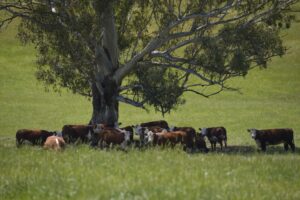
Livestock slowly kill paddock trees one-by-one through compacting soil beneath them and ringbarking the trunks by rubbing. Farmers are encouraged to fence trees to allow for sufficient shade and also protect trees.

